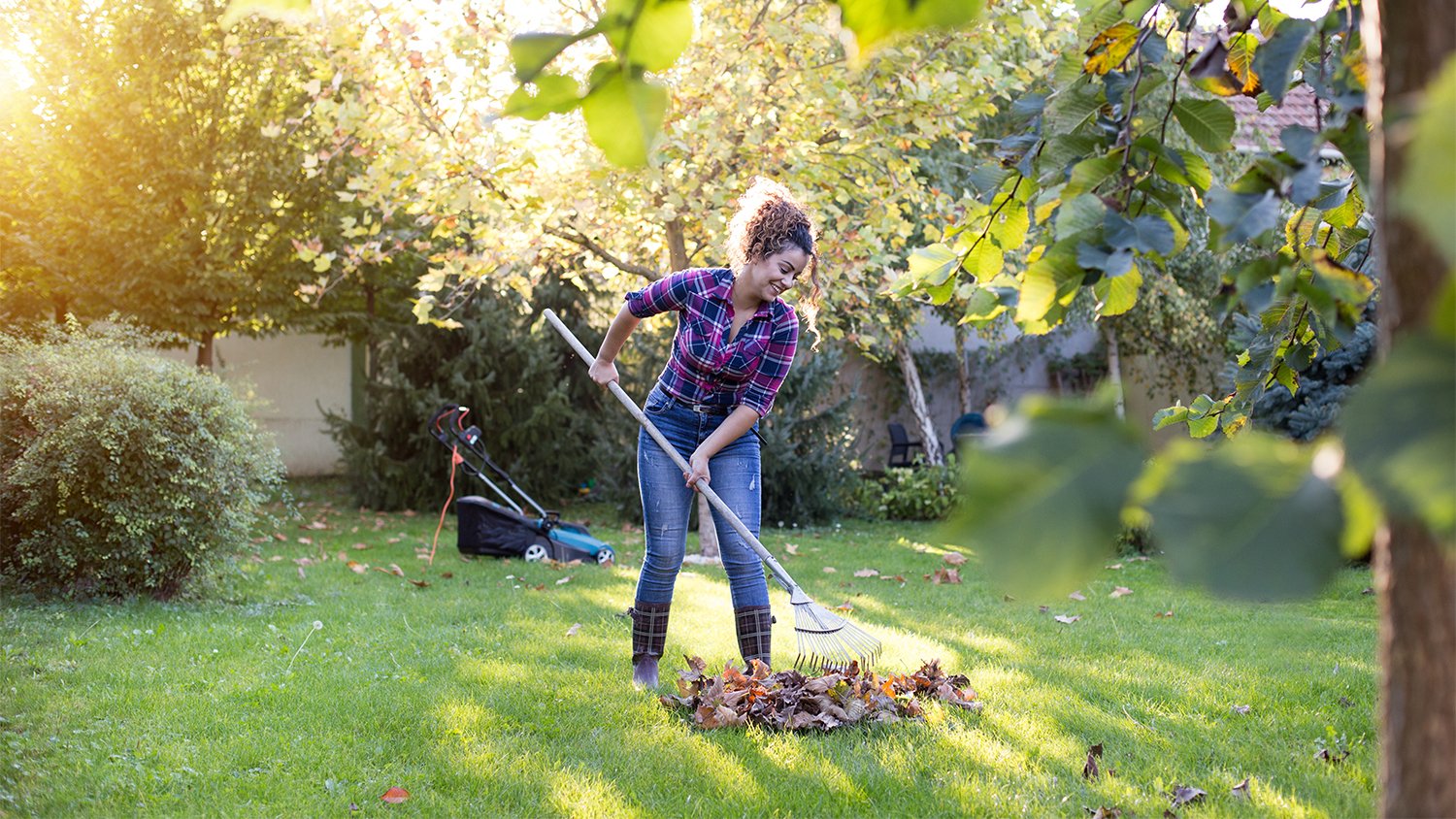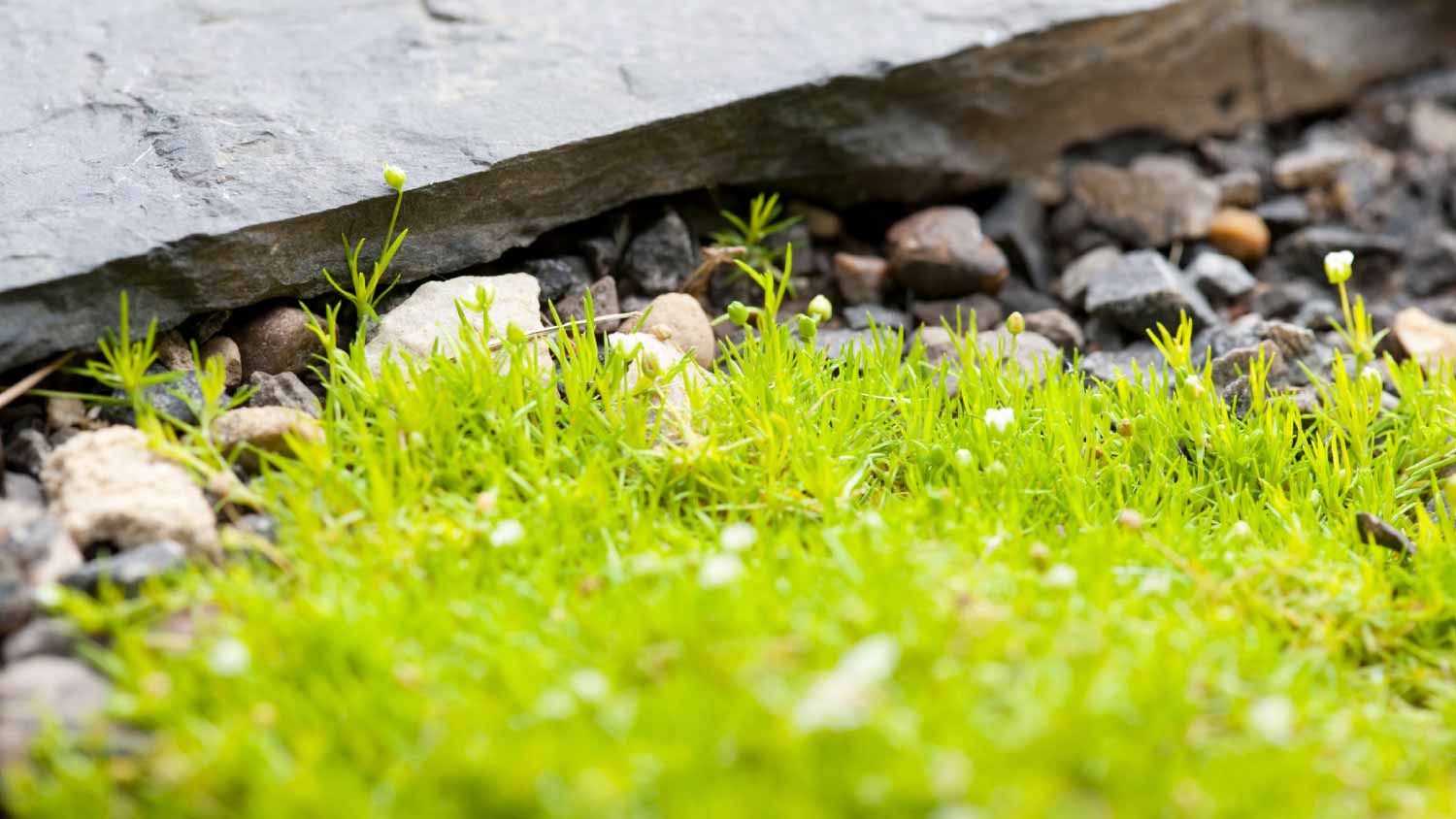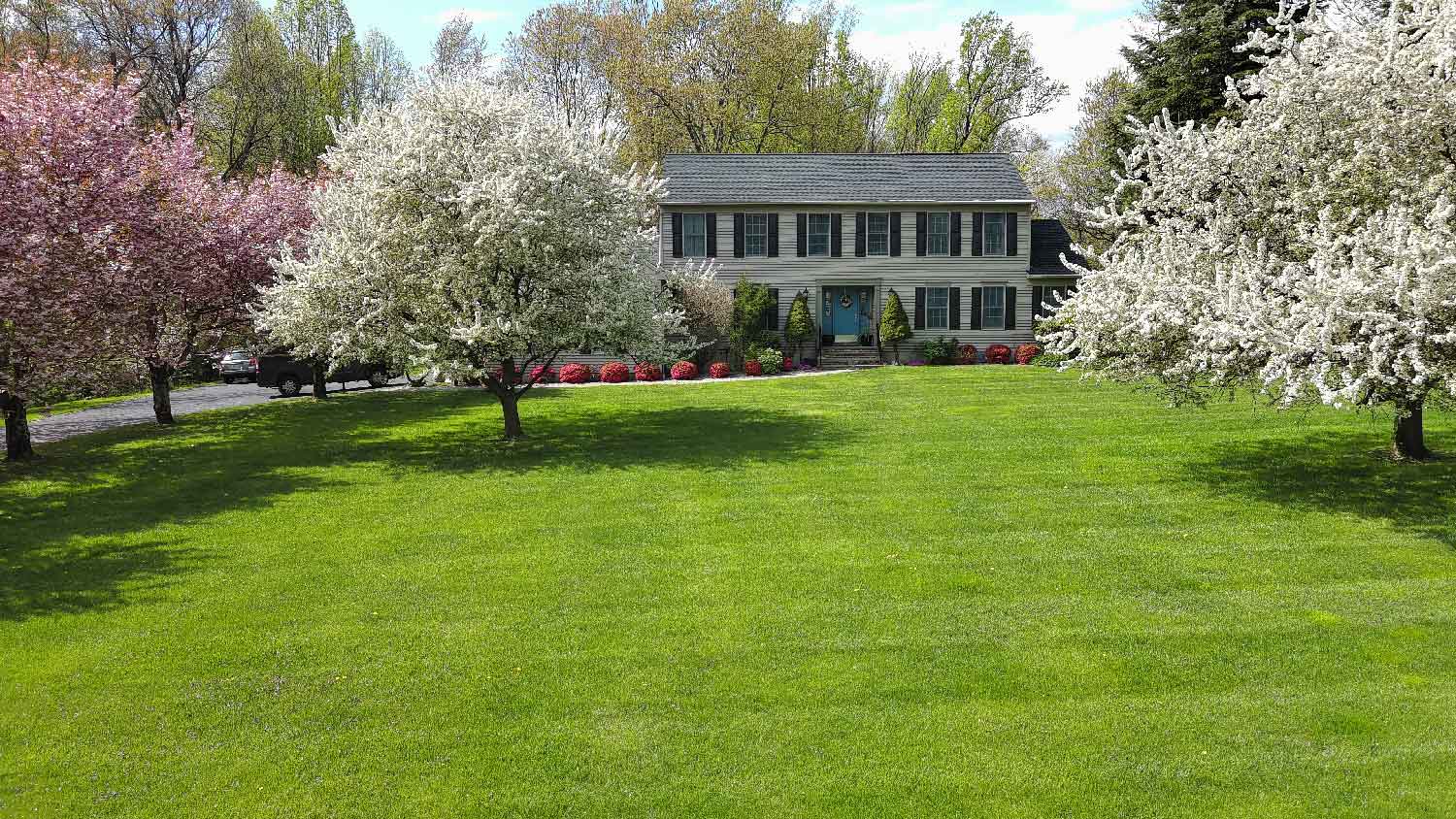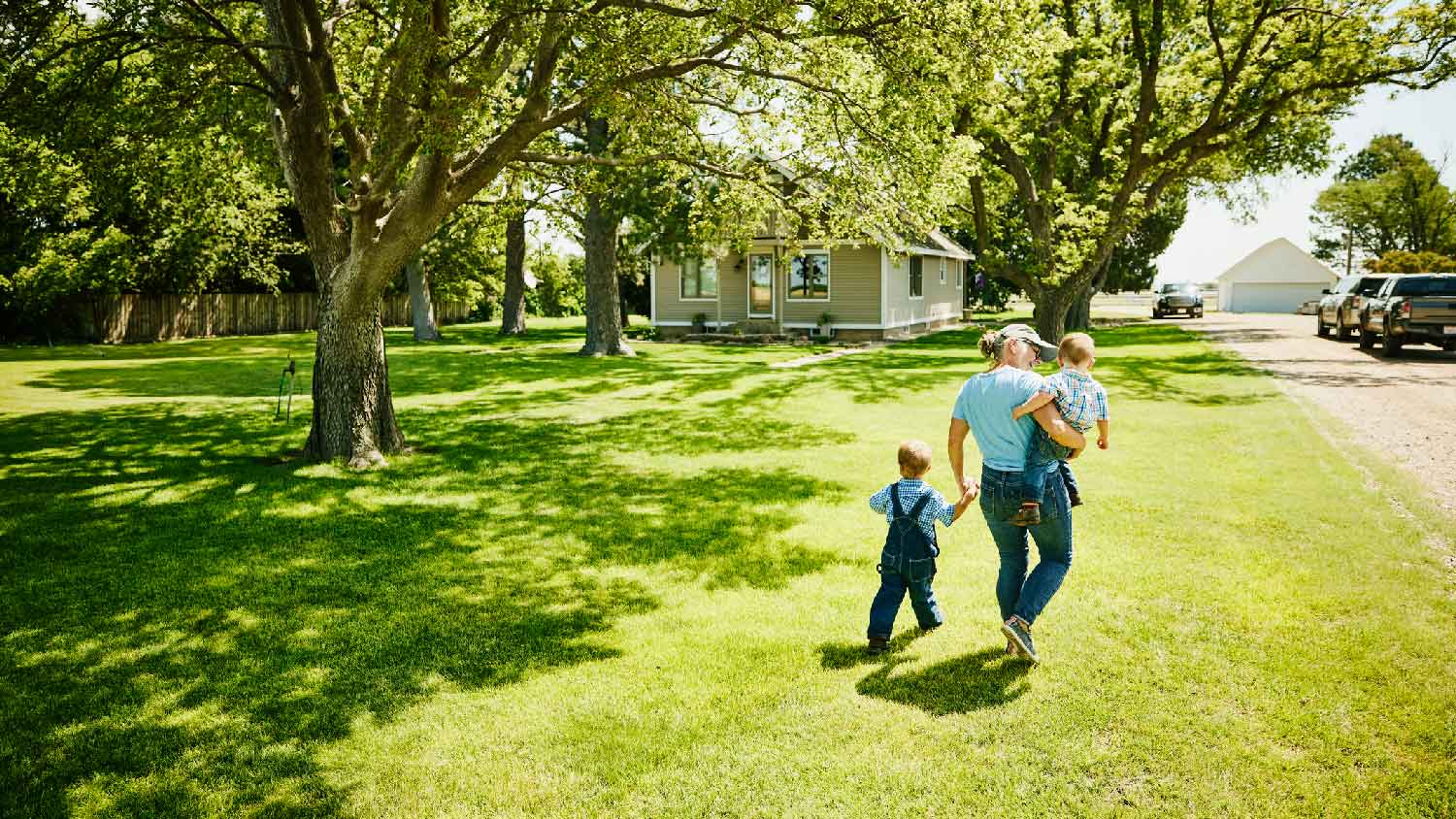How to Seed a Lawn For Lush and Healthy Results
The grass will always be greener on your side with these tips


A healthy lawn can do wonders for your home’s curb appeal, which is why learning how to seed a lawn is an essential homeownership skill. But thin grass, bare spots, or dying grass are all common lawn issues that can keep your yard from looking its best. If you want to achieve healthy, green grass in your lawn, follow these seeding steps.
Why Do I Have to Seed My Lawn?
The magic of seeding your lawn is that with patience, preparation, and ongoing maintenance, you can create the lush yard of your dreams. You may want to seed your lawn to establish grass in a new area, fill in bare or brown spots, or make your existing lawn more dense and full. Seeding a lawn can help you have a rich, lush outdoor space and boost your home’s curb appeal. You’ll have a healthy lawn for everything from yard games to summer barbeques.
How Much Does It Cost to Seed a Lawn?
The average cost to seed a new lawn ranges from $450 to $1,700. The size of your property plays the biggest role in the cost, along with the type of grass seed and whether you hire a pro. It costs an average of $0.10 to $0.20 per square foot to overseed or spot-seed a lawn.
Preparing to Seed Your Lawn
Tossing down seeds won’t get the results you want. Here’s how to prepare for a successful lawn seeding project.
Understand the Types of Seeding
First things first: You have to determine which seeding process to apply to your yard. Here are a few different types of seeding to consider before you refresh your yard.
Reseeding: Reseeding your lawn involves planting new seeds on bare dirt.
Spot seeding: If you’re just planting seeds in specific barren areas, this is called spot seeding.
Overseeding: Overseeding helps make lawns look fuller by filling in sparse or thin grass.
Choose the Right Seeds
Grass isn’t just grass—there are many different types of grasses that thrive in various climates and conditions. For example, you may want tall grasses as a decorative element behind your flower beds or perennial grasses around your maple trees. There are warm- and cool-season grasses to consider, too.
The style of grass you choose may depend on your location and climate, light conditions, your landscape design preferences, and your budget. If you live in an area that typically experiences warm temperatures between 80 to 95 degrees Fahrenheit, try planting warm-season seeds like St. Augustine grass or centipede grass. On the other hand, consider using cool-season grasses like fescue if you live in a chillier climate.
Time of Planting
You may wonder how often you should be seeding your lawn in the first place. Should you seed in spring for flowing summer grasses, or do you brave the wintry cold so it sprouts in time for April showers?
Generally, the best time of year to plant grass seeds is in late summer or early fall. The seeds will have less competition from crabgrass and other weeds, they’ll require less water than in the summer, and the soil will still be warm enough for the seeds to germinate before winter.
How to Seed a Lawn
With your sun hat and garden gloves on, cultivate and level your soil, plant the seeds, then water the area.
1. Prep the Soil
Less compacted, aerated soil is the best base for seeding. Clear out any rocks, branches, or other debris that will impede the grassy growth. If you’re reseeding the lawn, you can remove existing grass with a shovel, sod cutter, or herbicides to kill the grass. Note that using an herbicide will take one or two weeks to kill off the old grass.
If the soil is compacted, you can use a tiller to break it up. With compacted soil, air and nutrients can’t penetrate the land as deeply, so it may also need aeration to help the seeds thrive. You can hire a local lawn aeration service for healthier soil before you start seeding, or aerate your lawn yourself.
2. Level the Area
Level your yard by filling in gaps or holes with fresh soil, then rake through the soil to break the soil into small pea-sized pieces. You can check the evenness with a wood board or carpenter’s level, or use your best judgment. Use the back of a soil rake to smooth the soil.
3. Spread Seed and Fertilizer
Spread grass seed evenly across the area at the rate indicated by the manufacturer. You can spread the seed with your hands for small areas or bare spots. For larger areas, use a hand-spreader or push spreader. Spread half the seeds in one direction and half in a perpendicular direction to create a crisscross pattern. You’ll end up with full, even coverage by varying the direction.
The best way to ensure your seeds have the nutrients they need is to apply lawn fertilizer the same day you seed the lawn. Spread fertilizer by hand for small areas or use a fertilizer spreader for larger lawn areas.
Find fertilizers made specifically for seeding or new grass, and then follow the product instructions to give your new yard seeds the boost they need. To find the fertilizer that works best for your lawn, consider a soil test. A home soil test costs about $15 and can measure pH levels and NPK values.
4. Cover with Soil
The next step is essential: covering your seed with ¼ inch of topsoil. This step will ensure solid seed-to-soil contact, which prevents your seeds from drying out. The soil also protects the seed from washing away by wind or water. You can use a soil rake to gently sow the seed into the top ¼ inch of soil. However, if you put the seed any deeper, the seed won’t get enough sun to germinate.
5. Water the Seeds
To germinate your new seeds, you need to keep the soil and seeds moist. You should water your grass immediately after seeding. You’ll want to keep the lawn moist but not overflowing with water for two weeks to give the seeds time to get established. That means misting the lawn about once per day, or watering more often in hot weather.
After the first two weeks, water enough to keep the top 2 inches of soil moist until the grass is about three inches high. Then, you can reduce watering to two or three times per week as the grasses grow deeper roots.
6. Maintain Your Lawn
With your lawn’s bare spots now covered in bright, healthy green grass, it’s time to keep it looking its best. If you planted seeds in late summer or early fall, rake away leaves to help sunlight reach the soil for the seeds and young grass. About eight weeks after seeding, you can start regular lawn fertilization. Although the new grass will look inviting quickly, wait at least one month after seeding before walking or playing on your refreshed lawn.
Tips for Seeding Aftercare

Giving your lawn extra care and attention during the post-seeding weeks greatly impacts how well the seed germinates and grows.
Water the Seed
Your seed needs to remain moist, especially for the first two weeks, for it to germinate and take root in the soil. Mist the lawn once per day for the first two weeks, and then water your lawn two to three times per week for the next six weeks. Most grasses need 1 to 1½ inches of water each week, including rainfall.
Hold Off on Mowing
It can be tempting to mow the older grass that is growing taller than you’d like—especially if you spot-seeded parts of the lawn or overseed your lawn. But you should wait until the new grasses are at their optimal height before mowing. Most grasses grow best when they’re at least 3 inches in height, although some grasses, such as Zoysia and Bermuda, should be kept shorter, at around 1½ to 2 inches. In general, only cut one third of your grass’s height each time you mow.
Stay Off the New Grass
Be sure no one steps foot on the newly seeded area for at least four weeks, including kids and pets. Mark off the area with stakes and string to serve as a friendly reminder to avoid accidentally stunting the new grass growth with muddy footprints. After the waiting period ends, proceed with caution and continue making it a low-traffic area, if possible.
DIY vs. Hire a Pro
You can spot seed or overseed a lawn yourself with the proper care and technique. If you have a large property to reseed or want an expert’s opinion on what’s plaguing your lawn, contact a local lawn seeding service. These pros will ensure your lawn grows healthy and thick and conduct the required prep work with your soil. As mentioned above, the cost to seed or reseed a lawn ranges between $450 to $1,700 for professional services and results.
Paige Bennett contributed to this article.
Frequently Asked Questions
Throwing grass seed on existing lawn isn’t likely to germinate, grow roots, or become healthy grass. You need to prep the soil, spread fertilizer with your seed, and sow the seed into the soil. Water the seed every day for two weeks to ensure it germinates and grows roots. Be sure to stay off the area and wait to mow until it reaches optimal height.
The best months to put cool-season grass seed down are August and September. You should plant warm-season grass seed in the spring, specifically May and June. Planting during these periods gives the seed the peak periods of growth. It allows your seed to germinate and root quickly. You’ll have the best chance of short- and long-term grass growth and density.
Before you put down grass seed, you should cultivate your soil or add two inches of topsoil. You should also put down fertilizer at the same time as your seed to prompt healthy growth. Be sure to water after you put down grass seed, especially for the first two weeks.





- How to Power Seed Your Lawn—Plus, Cost Info and Tips for Greener Grass
- How To Prepare Soil For Grass Seed For a Healthy New Lawn
- How to Overseed a Lawn for Healthier Grass
- How to Grow Grass Fast: 8 Steps for a Rapidly Lush Lawn
- How Much Seed Do You Need For a New Lawn?
- What Do You Put Down First: Grass Seed Or Fertilizer?
- Can You Overwater Grass Seed? Tips for Getting Your Irrigation Just Right
- How To Tell If Grass Seed Is Germinating And Growing Into A Lush Lawn
- Power Seeding vs. Aerating: What’s the Difference and Which Does Your Lawn Need Most?
- 9 Fall Lawn Care Tips for a Healthy, Thriving Yard










